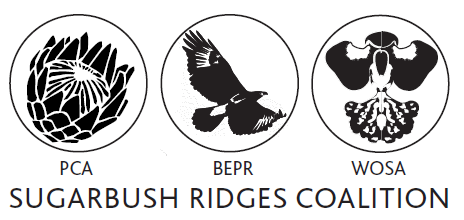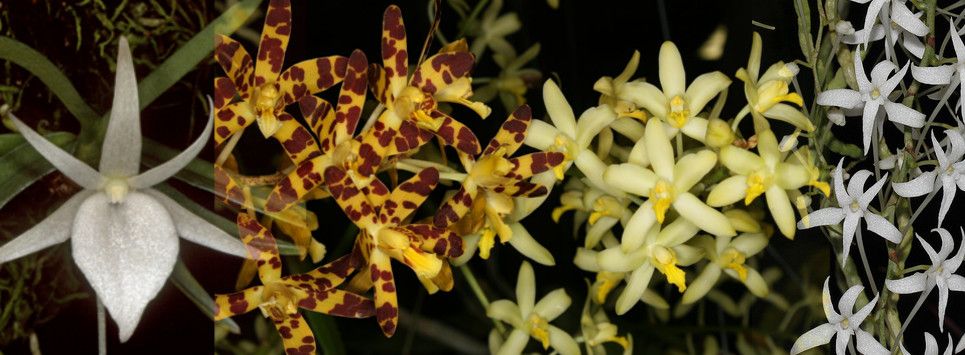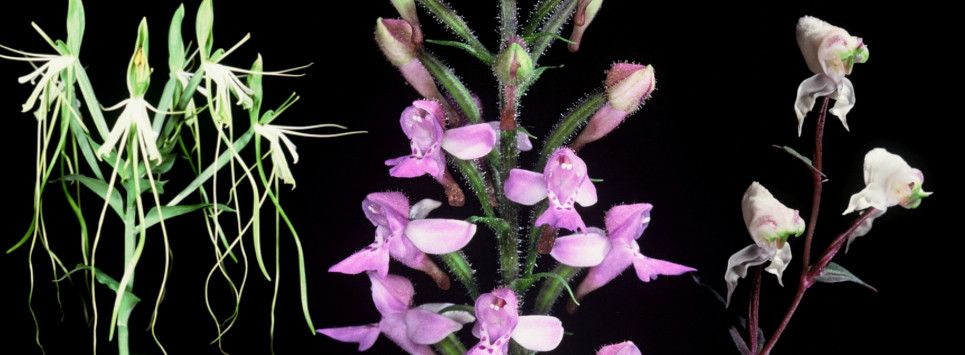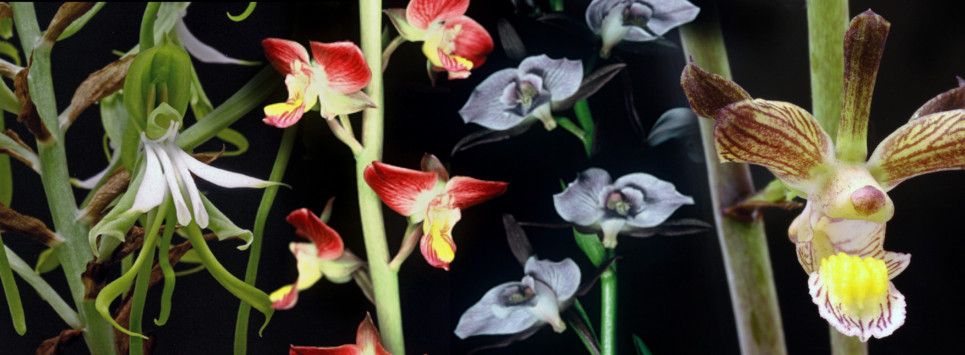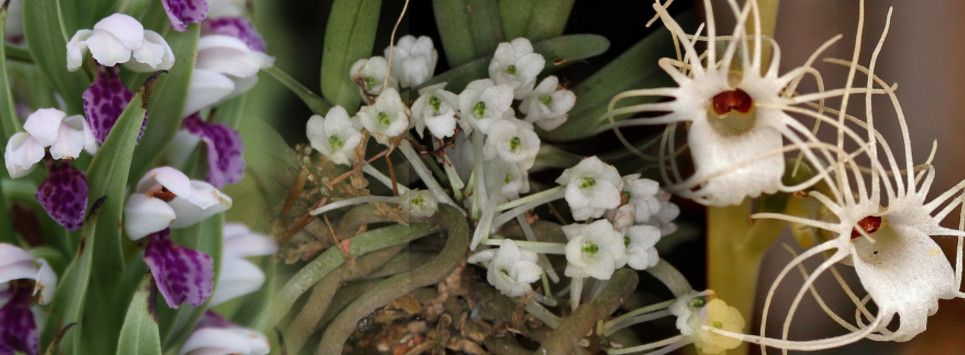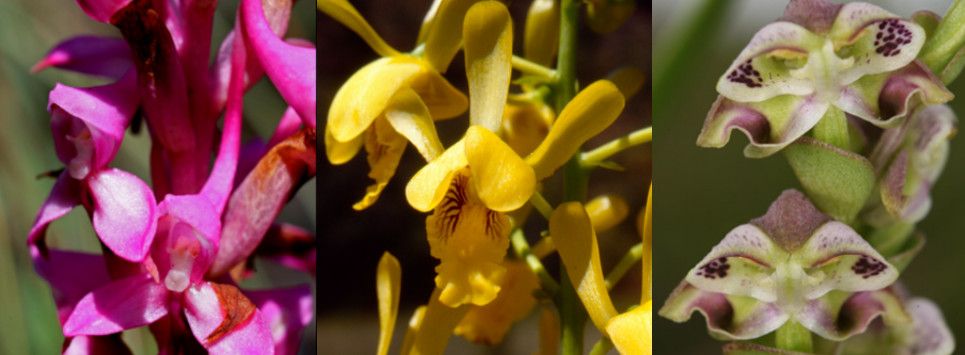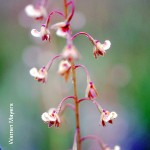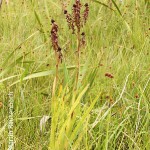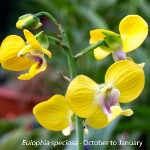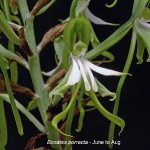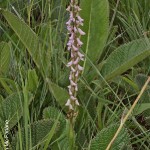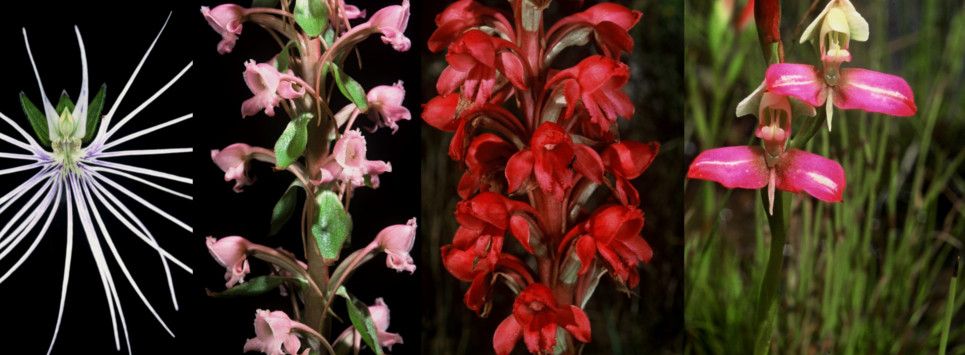
Welcome to WOSA
Very little is known about indigenous orchids by the public who are largely unaware that there are just under 500 species of which 45 are endemic (only occur in South Africa). Very little research has been carried out regarding ecology, conservation and propagation although a number of species have become extinct and habitat destruction is progressing at an alarming rate. Up until now there has been no attempt to address these issues on a National scale and Provincial legislation and cooperation is fragmented. Only through a focused National integrated effort that engages the public and all roll players will survival of orchids be assured.
Note that this document only contains a summary of the relevant Ordinances, Acts and Regulations and has no legal status. It has been prepared to give a brief overview of the legislation governing the indigenous orchids in Gauteng. For the exact wording refer to the full copy of the Ordinance, Act or Regulation published in the Government Gazette. These documents can be also obtained from the Provincial Administration.
Note that this document only contains a summary of the relevant Ordinances, Acts and Regulations and has no legal status. It has been prepared to give a brief overview of the legislation governing the indigenous orchids in Gauteng. For the exact wording refer to the full copy of the Ordinance, Act or Regulation published in the Government Gazette. These documents can be also obtained from the Provincial Administration.
Mpumalanga Nature Conservation Ordinance (Ord. 12 /1983)
1. Collection of indigenous orchids
No person shall collect any indigenous orchid unless he or she is in possession of a valid collecting permit from the Provincial Administration. Furthermore written permission to collect such indigenous orchids from the landowner must accompany the permit application.
Exceptions to this ruling are: the landowner may pick the flowers of an indigenous orchid on his or her property. This includes collecting indigenous orchids from land specifically set aside for the purpose of cultivating these protected plants or from land that is to be used for agricultural or housing purposes.
2. Buying and selling indigenous orchids
No person shall sell any indigenous orchid unless he or she is in possession of a valid selling permit from the Provincial Administration. No person shall buy an indigenous orchid unless the seller has a valid selling permit.
3. Donation of indigenous orchids
No person shall donate an indigenous orchid to another person without furnishing the recipient with a written document reflecting the following:
a) The full name and address of the donor and recipient.
b) The number and the names of the species of indigenous orchids donated.
c) The donation date.
d) The manner in which the donor came into possession of the plant.
e) The donor's signature.
4. Export and import of indigenous orchids
No person shall import any indigenous orchid into or export any indigenous orchid from Gauteng without a valid export or import permit from the Provincial Administration.
5. Conveyance of indigenous orchids
No person shall convey any indigenous orchid unless he or she has obtained a permit to do so previously or if the plant was bought legally or received as a donation. In both latter cases the person must be in possession of documentation proving that the plants were legally acquired.
CITES
CITES stands for the Convention for the International Trade in Endangered Species. The meeting at which the CITES agreement was drawn up was held in 1974. Various countries, including South Africa, are party to the Convention and thus bound to the legislation concerning the international trade in endangered species.
Species of plants and animals are categorised in three different appendices:
- Appendix I contains all species immediately threatened by extinction.
- Appendix II contains all those species that might become endangered if commercial trade is allowed. This includes all South African indigenous orchid species.
- Appendix III contains plant and animal species of which trade is to be monitored.
The species listed in these appendices may be up- or down listed depending on the condition of wild populations.
Indigenous orchid species that are to be exported to another country require valid CITES documentation. Without CITES documentation, the plants can be confiscated by the authorities of the country into which they are being imported. CITES documentation will only be provided if the owner of the plant can prove that it was obtained in accordance with the provincial legislation and the grower is registered as a flora grower with the relevant provincial authority. Permit and CITES applications must be done well ahead of time. Further requirements for the export of indigenous orchids are as follows:
1. Artificially raised seedlings in flask
No CITES certificate is required.
A phytosanitary certificate is required according to the regulations of the country that the flasks or plants are being sent to. Write to the country of destination well ahead of time to find out what their requirements are. These requirements are presented to the Directorate of Plant and Quality Control under the Department of Agriculture in the respective Province. Phone the Directorate beforehand and arrange for the inspection of the flasks. The phytosanitary certificate is issued by the Directorate on completion of the inspection.
An export permit is required as stipulated by the local nature conservation authority.
Inform the recipient so that he or she can obtain import permits according to the regulations of the country of destination if required.
2. Artificially raised plants out of flask
A CITES certificate is required for species and hybrids and can be applied for from the local nature conservation authority.
A phytosanitary certificate is required according to the regulations of the country that the flasks or plants are being sent to. Write to the country of destination well ahead of time to find out what their requirements are. These requirements are presented to the Directorate of Plant and Quality Control under the Department of Agriculture in the respective Province. Phone the Directorate beforehand and arrange for the inspection of the flasks. The phytosanitary certificate is issued by the Directorate on completion of the inspection.
An export permit is required as stipulated by the local nature conservation authority.
Inform the recipient so that he or she can obtain import permits according to the regulations of the country of destination if required.
National Environmental Management: Biodiversity Act (10/2004) & TOPS regulation
In addition to the above the regulations as stipulated in the NEMBA or National Environmental Management: Biodiversity Act (10/2004) and TOPS regulation (Threatened or Protected Species) must be adhered to.
Currently none of the indigenous orchids listed for Gauteng are listed as threatened or protected in NEMBA (10/2004) Notice 389 of 2013 published on 16 April 2013.
References:
Wodrich, K.H.K., 1997. Growing South African Indigenous Orchids. A.A. Balkema Publishers, Rotterdam.
Note that this document only contains a summary of the relevant Ordinances, Acts and Regulations and has no legal status. It has been prepared to give a brief overview of the legislation governing the indigenous orchids in Gauteng. For the exact wording refer to the full copy of the Ordinance, Act or Regulation published in the Government Gazette. These documents can be also obtained from the Provincial Administration.
Western Cape Nature Conservation Ordinance (Ord. 12 /1983)
1. Collection of indigenous orchids
No person shall collect any indigenous orchid unless he or she is in possession of a valid collecting permit from the Provincial Administration. Furthermore written permission to collect such indigenous orchids from the landowner must accompany the permit application.
Exceptions to this ruling are: the landowner may pick the flowers of an indigenous orchid on his or her property. This includes collecting indigenous orchids from land specifically set aside for the purpose of cultivating these protected plants or from land that is to be used for agricultural or housing purposes.
Acrolophia bolusii
Description
Robust terrestrial up to 800 mm tall. Leaves are overlapping from the base up and up to 300 mm long. Inflorescence is branched and carries several flowers, which are brownish in colour and have yellow or white lips.
Acrolophia cochlearis
Description
Robust terrestrial that grows up to 1m tall. Leaves are overlapping and keeled, up to 400 mm long. Inflorescence has up to 5 branches and is laxly flowered. The small flowers are non-resupinate and have brownish petals and sepals, with a dull yellow lip.
Acrolophia lamellata
Description
Robust terrestrial, up to 830mm tall. Leaves often in a basal fan, keeled, linear to spear-shaped, margins finely toothed, up to 200mm long by 15mm. Inflorescence usually simple, occasionally with branches, laxly many flowered. Petals and sepals green to purplish brown, lip mid-lobe white, side lobes purple, 5-7 rows of papillae. Similar to Acrolophia capensis. Formerly Acrolophia capensis var. lamellata.
Eulophia speciosa
Description
Robust terrestrial, up to 900mm tall. Partly visible pseudobulbs sometimes evident. Leaves succulent, fully developed at flowering time, up to 650 mm long. Inflorescence lax, with 10-30 flowers. Sepals pale green, petals and lip yellow, lip side lobes with purple lines, crests deep yellow. Sepals reflexed, up to 13 mm long, lip 3-lobed, spur up to 3 mm long. Pollinated by carpenter bees. Syn: Eulophia austrooccidentalis, Eulophia leucantha, Eulophia wakefieldii.
Eulophia streptopetala
Description
Robust terrestrial with flowering stems that can grow up to 2.5m tall. The pseudobulb grows partially above the ground (much like a Cymbidium) and is up to 40 mm in diameter. The new growths develop from the base of the previous seasons matured pseudobulbs and the leaves are partially to fully developed when flowering. Leaves number between 4 and 9 and have a distinct ribbing appearance. The inflorescences, which grow next to the new growth with the developing pseudobulb, carries between 10 and 40 flowers. These are borne sequentially. Sepals are olive-green to green and are suffused with a reddish-brown. The petals are a chrome-yellow colour. No fragrance has been detected. The spur is 2mm in length.
Bonatea porrecta
Description
Fairly robust terrestrial, which can grow up to 560 mm tall. Leaves 5-16, cauline, narrowly oblong, up to 130 mm long and withered at flowering time. Inflorescence lax, carries 3-36 flowers, which are green and white.
This species is different to all others in Gauteng in that flowering commences between late June after the leaves have withered in the dry winter conditions. The plant starts growing a new shoot beside the old flowering shoot as soon as it starts raining in early summer and continues until late autumn, when it is in full leaf and commences the start of the terminal inflorescence. The leaves have fully withered by mid May.
Disa aconitoides
Description
Slender terrestrial up to 600mm tall. Different to other species and quite unique. Rarely produces sterile shoots. Leaves 5-10 on sterile shoot, cauline. Inflorescence lax with 15-50 flowers, which face downwards at 45 degrees. They are off-white or flushed pale mauve with darker mauve spots. The lip has a central solid mauve line.
Become a Member
Any individual or corporate or organisation that shares our interest in indigenous orchid conservation can apply to become a member of WOSA and become a part of the Wild Orchid Community.
An Annual membership fee of R200.00 per individual, R300 per family and R500 organisation or corporate will become due on application for membership and will be renewable on the 1st of July each year.
WOSA Member Benefits
Members will,
- become proud members of the Wild Orchid Community, and strive to make a difference in conservation of our indigenous orchids.
- have voting rights at General Meetings and the AGM,
- enjoy reduced rates when attending functions and the WOSA Annual Conference,
- be kept up to date on WOSA activities and achievements,
- receive invitations to join in activities, such as orchid relocation exercises and excursions to visit orchid sites,
- be encouraged to form Wild Orchid Chapters or join existing WOSA Chapters.
WOSA Annual Conference
WOSA holds an Indigenous Orchid National Conference each year to discuss matters such as research needs, projects and WO Chapter report backs. We will select different venues and regions, during their peak flowering times, in deciding on a venue, which will allow delegates to become familiar with the flowering orchids in that region and the challenges and opportunities facing the region.
The Executive Committee will select a suitable venue send out a call for papers, arrange the program, and tie up logistics. Members
will be invited to attend the conference.
WOSA Membership Application Form
Please make payment by EFT
Bank: Standard Bank
Account: Wild Orchids Southern Africa
Account Number: 406886113
Branch: Northgate
Branch Code: 001106
Use your full name as the reference, complete the form below and attach proof of payment into the form or email it to This email address is being protected from spambots. You need JavaScript enabled to view it.
Cost is R200.00 per individual, R300 per family and R500 organisation or corporate.
An annual membership fee will become due on an application for membership and will be renewable on the 1st of July each year.
Please note all fields are required to process an order.
Thank you for the application we will be in contact shortly to confirm your details.
REGISTERED IN TERMS OF THE NON-PROFIT ORGANISATIONS ACT, 1997 (ACT 71 OF 1997) : REF: 141-119 NPO
Please submit proof of payment to Duncan MacFarlane This email address is being protected from spambots. You need JavaScript enabled to view it. -and return this form to This email address is being protected from spambots. You need JavaScript enabled to view it.
For more information regarding the preservation of South Africa's wild Orchids or if you would like to get involved please email This email address is being protected from spambots. You need JavaScript enabled to view it. or complete this short form Contact Us and we will contact you.
